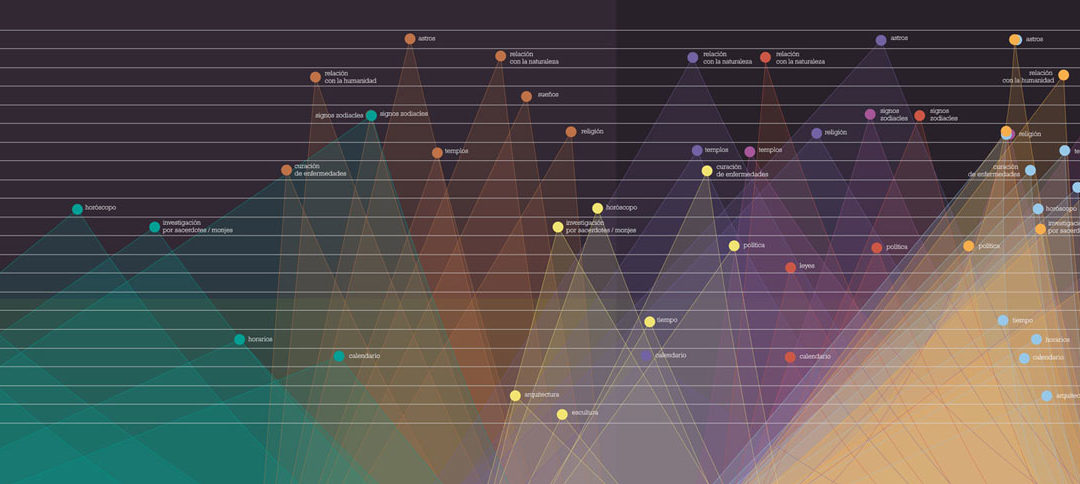
Jun 20, 2023 | Customer Experience
Why you need to leverage digital transformation to provide your consumers with an enhanced customer experience
As digital technologies evolve and redefine every aspect of how businesses operate, the economy is simultaneously transforming. At the core of this multifaceted transformation lies the responsibility of delivering distinct, enhanced, and outstanding experiences to the customer.
While efficiencies in process and production may help to even the playing field, when used alone, this model will not offer a business long term advantages. To stand out against competitors in today’s economy, businesses must design and deliver imaginative and exemplary customer experiences leveraging the powers of digital transformation.
What is Digital Transformation?
Digital transformation is the use of fast, innovative, and rapidly evolving digital technology to solve problems and propel the growth of businesses. While there are numerous elements contained within the purview of the term ‘digital transformation’, at the center lies its correlation to a customer centric focus. As businesses continue to adopt digital transformation, the change is fundamentally driven by an evolution in customer expectations.
- According to a 2017 Salesforce study, 75% of customers surveyed expect a consistent experience across all channels of interaction, to include online, social media, on the phone, or in person.
- According to a Wunderman survey, 79% of customers want brands to demonstrate that they are valued, prior to making a purchase. The survey also found that 54% feel a greater affinity for brands that appear to understand them.
- According to a 2018 Temkin study, customers who have an exceptional customer experience are 7 times as likely to make a new purchase, 5 times as likely to repurchase, and 4 times as likely to refer their purchase to another consumer.
The results are undeniable: an enhanced customer experience matters. The benchmarks and dynamics of the consumer-business relationship are clearly being driven by the consumer. Equally apparent, digital transformation is one of the most efficient means available to effectively and consistently meet and exceed customer expectations and standards to provide an enhanced customer experience.
Customer Experience in the Digital Age
Customer experience (CX) includes every interaction your customer has with your brand and organisation. Across every stage of their journey, these interactions will shape their overall perception of your company. When your company creates a positive customer experience, they will be more likely to use your products and services. Additionally, when a customer has a positive experience, they will be more likely to share their experience with their friends and family. Perhaps most importantly, a positive customer experience leads to enhanced brand loyalty.
CX is an integral, embedded, and definitive aspect of your brand, products and services. Given the current climate of our digitized economy, we have reached a point where businesses can create differentiation from their competitors through engaged customers.
According to Ann Lewnes, SVP and CMO for Adobe, “The term ‘customer experience’ won’t exist in the organization of the future. It will be so deeply entrenched in a company’s product, process, and culture that it will be synonymous with the brand and represent the only way to do business.” We’re inclined to agree. Digital transformation has both enabled and enhanced the customer experience. It is not merely a fad in business strategy, but rather CX represents the shift to a new paradigm. CX is the new expectation. It’s the new industry standard and is here to stay.
Artificial Intelligence and the Internet of Things
As Artificial Intelligence (AI) and the Internet of Things (IoT) increasingly become an integral aspect of our everyday lives, the very definition of what constitutes as good service and a customer experience worth paying for will continue to evolve. Subsequently, when you consider the digital transformation you must also consider the impact of AI and IoT. As we look towards the future, one will be hard pressed to find a market that will not be impacted by these influential technologies such as innovations needed on operational excellence software.
According to R “Ray” Wang, Chairman and Principal Analyst at Constellation Research, personalized relevance and context is the key to the customer experience of the future. Wang believes “We are living in an attention economy. Contextual relevance earns you the permission to engage.”
As innovative technologies such as AI and IoT continue to disrupt the model, the only way to attract and retain a customer base will be to use digital technologies to deliver seamless and consistent customer experiences. These solutions are designed to respond to natural language and ‘normal’ human communication. There is literally no learning curve for the user. Additionally, these innovative technologies lower costs by using distributed cognitive technology (i.e. budget friendly memory space and processors).
Automated customer engagement enables a personalized experience tailored to extremely specific preferences. In fact, they are flexible enough to proactively engage customers’ curiosities and whims in real time. As customers become accustomed to this level of individual attention, anything less will be inadequate. At the end of the day, digital transformation is the only means by which to deliver such a service to the customer.
CX Through Digital Transformation
As technology and innovation continue to shape digital transformation, businesses will have no feasible alternative to incorporating and embracing a digitally enhanced customer experience focus. The pace at which industry leaders are incorporating these technological breakthroughs, as well as a customer’s rapid uptake of platforms and devices that deliver such services, represents a sort of “changing of the guard.”
From the internet to mobile devices and everything in between, the past few decades continue to ‘move the cheese.’ If your business won’t look for the cheese in its new location, or rather your new approach, you will be left behind. To say that digital transformation, as applied to customer experience, represents the greatest single leap of all would be an understatement. So what are you waiting for? Leverage digital transformation to provide your consumers with the enhanced customer experience they have grown to expect.
At Kanari, we are all about your customer and their experience. Our innovative customer experience management solutions provide a reliable, flexible, and scalable platform to help your company create better customer relationships. Contact a member of our team to schedule your customer experience management consultation.

Jun 20, 2023 | Customer Experience
Why you need to become a customer intelligent enterprise and how to get there?
Most businesses intuitively realize their customer relationship is at the heart of their operational model. In an era of ever-escalating consumer empowerment, new strategies to engage clients seem to generate a buzz every few months. This recent focus on reimagining the customer experience is largely because such strategies deliver positive outcomes and operational advantages. A customer intelligent enterprise identifies and analyzes customer behavior to generate and embed a dynamic response within its processes and functions.
A 2013 study by Accenture found a lack of brand loyalty among millennials as one of the primary challenges faced by businesses today. The 2018 PWC Global Customer Insights Survey determined a larger percentage of customers are being influenced in their purchasing behavior by social media, rather than individual retail websites and marketing.
Lack of brand loyalty and changes in purchasing behavior make it increasingly apparent that businesses must set up a responsive feedback loop to strategize effectively and to achieve optimal outcomes in their actions and processes. This feedback loop should include customer perceptions and behaviors to gain a true understanding of customer needs.
Customer Experience Produces Tangible Results
In what can sometimes seem like a rush for easy answers and clever jargon, strategies built around customer experience and intelligence are validated by the results they generate in market share, customer retention, and inflated profit. For example:
- By redesigning their customer experience to deliver a more personalized experience and shorter wait times through increased throughput, customer insights consultancy Lenati was able to deliver an increase in revenue of $400 million for Starbucks.
- The Amadeus IT Group’s use of customer intelligence to optimize business behavior within the travel sector is helping to rationalize a particularly dynamic and volatile industry.
- Vodafone UK developed an app to deliver real time graphical data on their network performance which resulted in a 54% reduction in escalated complaints requiring callback. In an industry first, the company used the app to deliver a network satisfaction guarantee that compensated any drop in services with bonus data, in real time.
Moving Past Transitional Customer Research Models
When used alone, traditional customer research and feedback mechanisms are no longer enough to collect data that can be used to create actionable insights. Given the climate of today’s customer-centric approach, a company needs a comprehensive and continuous flow of information to make effective business decisions driven by customer engagement. This real time data can then be analyzed to create solutions that will create an enhanced customer experience. Additionally, contextualized data can be used to generate strategy and specific actions.
Creating intelligent analytical metrics that incorporate domain knowledge are critically important for a business to infuse the data it collects with context. Businesses need to act according to the customer’s terms, and they must also find ways to derive actionable insights from these interactions. Furthermore, these interactions need to be enriched by creating and acknowledging context (i.e. mapping data onto particular demographics, behaviors and conditions to generate targeted actions).
Effective Customer Experience Processes
An effective customer experience process should center on creating a relationship, enriching interactions, interpreting data into insight, and generating actionable responses. As you streamline your customer experience processes, consider the following:
- Move beyond the demographics and raw data. In order to create an enhanced customer experience, a business must move past the mere who, what, where, and when to a comprehension of the why. The aim is to engage the customer into a richer interaction than with previous traditional models to generate contextualized data for real time results.
- Streamline data input. Separating the signal from the noise is a key component for an enhanced customer experience. While there are clear benefits to interacting with customers in a fashion that is engaging and ongoing, the data generated is often unstructured. It’s important that a business streamlines their data, choosing the correct set of filters and metrics to make sense of the information.
- Align business processes with customer experience. Among the primary focuses of a customer intelligent enterprise lies aligning business processes with customer experience. More often than not, it’s the business culture that demands a reimagining (rather than individual processes). Businesses need to take their customer’s perspective, in order to develop actionable strategies that will benefit them.
- Create a customer value proposition. As Mark Cuban famously put it, “Treat your customers like they own you, because they do.” A customer value proposition is the final actionable goal that a customer intelligent enterprise is driving towards. In the age of the empowered consumer, it’s important for businesses to concede that dynamics between enterprises and their consumers have changed. Rather than bracket customer data into categories that reflect the company’s priorities alone, actionable insights must be mapped onto the customer’s preferences and needs. Only then will a business deliver an enhanced customer experience.
Stand Out with Enhanced Customer Experience
Given the current climate of shifting and transient loyalties, it’s imperative for businesses to develop an engaging relationship with their customers. To truly differentiate themselves and retain customer loyalties, businesses must consider data from the perspective of the customers whose actions and statements generate it. Truly game changing insights require businesses to take the customers’ perspective in order to generate actionable strategies to meet those concerns.
At Kanari, we are all about your customer and their experience. Our innovative customer experience management solutions provide a reliable, flexible, and scalable platform to help your company create better customer relationships. Contact a member of our team to schedule your customer experience management consultation.

Jun 20, 2023 | Customer Experience, Voice of Customer
Customer feedback can be some of the most valuable information available to your business and today’s connected world allows you to ask and act upon it in real-time. Collecting real-time feedback ensures you get more accurate and relevant data, minimizing the negative consequences of errors as well as confirming to your customers that your organization values their opinion.
Successful businesses tend to value the collection and analysis of feedback as a key input towards business improvement and developing customer relationships. However, limiting these processes to quarterly – or even monthly – surveys has inherent shortcomings. Memory can be unreliable, and even relatively short delays after the customer’s most recent dealings with a business can impact their opinion. For instance, a customer opinion may be skewed by a satisfactory product, thereby masking issues they might have encountered with your service. In effect, feedback that is not gathered shortly after – or at the time of – a customer’s interaction with your business, could be biased and lacking in objectivity.
A recent study commissioned by The White House Office of Consumer Affairs indicates that an unhappy customer influences an average of 9 to 15 other people – by sharing their experience. 13% of customers will even get the word out to more than 20 individuals! So, in a world empowered by social networks, where consumers are well-equipped to research, compare and share information about their experiences, not having real-time feedback will limit your ability to address negative customer experiences, promptly and effectively.
Acting on real-time feedback results in higher customer retention
The following quote, from Karl Albrecht and Ron Zemke’s classic 1985 book “Service America in the new Economy”, is still relevant today.
“Of the customers who register a complaint, between 54% and 70% will do business again with the organization, if their complaint is resolved. That figure goes up to a staggering 95% if the customer feels that the complaint was resolved quickly”
Service America in the new Economy by Karl Albrecht and Ron Zemke
Therefore, promptly routing unhappy customers back to a relevant agent could significantly boost your service recovery efforts.
Brief, but targeted surveys can radically enhance the capacity of a business to monitor its customer service standards, as well as the effectiveness of ongoing offers and initiatives. While engaging customers has actually been a fairly common practice during promotional activities, real-time tracking takes this one step further; by employing the strategy on an ongoing basis. Digital channels have enabled far more avenues and opportunities for interactions with customers. For that reason, well-designed surveys, that consider the client’s time, can take advantage of these channels, to generate extremely valuable data.
Collecting feedback on an ongoing basis enhances customer engagement
96% of unhappy customers don’t register their complaints, but almost 91% of those leave and don’t come back to the brand. By engaging these customers promptly, you can help limit the negative effects of their discontent. Furthermore, by giving your customers a means to express their concerns can make them feel that you are genuinely interested; and will take steps to resolve their issues. From the customer’s point-of-view, soliciting feedback immediately after their experience shows that you care
By accurately identifying customer responses in real-time, you can also greatly enhance promotional campaigns and customer engagement in general. For instance, in the lead up to the 2012 London Olympics, beverages manufacturer Schweppes unveiled a campaign offering free entry on Mondays to a public swimming pool if they provided a Schweppes Abbey Well bottle cap. Thanks to real-time customer analytics, the company extended the campaign to include more pools and all days of the week. Eventually, 175,000 people participated in the offer, and sales of Schweppes Abbey Well products increased by 35% in a single year .
Constantly updated data optimizes resources and opportunities
The ability to tweak processes and strategies, on the basis of measurable changes in customer behavior, gives businesses the opportunity to make the most of market forces. And in the hands of an agile enterprise, real-time feedback can be a dramatically empowering resource. Some critical functions and parameters that you as a business can tweak as a result include:
- Budget allocations
- Identification of market opportunities
- Inventory management
- Targeting of marketing campaigns
An organization with the ability to identify variations in market forces and customer behavior, on an ongoing basis, you are inherently a more competitive and viable business.
Conclusion
Real-time feedback is an integral part of adhering to the highest standards of service and addressing any customer issues, as soon as they are identified. Effective real-time analytics allows an agile and proactive enterprise to minimize the negative consequences of errors and align itself to the needs and opinions of its target audience. Ultimately, streamlining feedback processes and creating a response mechanism – both customer facing and within the organization – are an essential and powerful tool in optimizing the performance and viability of the modern enterprise.
At Kanari, we are all about collecting real-time feedback. Our innovative customer experience management solutions provide a reliable, flexible, and scalable platform to help your company create better customer relationships. Contact a member of our team to schedule your customer experience management consultation.

Jun 20, 2023 | Customer Experience, Voice of Customer
In the era of instant gratification, customers expect their needs to be met and feedback to be acted upon, immediately. And with the variety of digital and social channels allowing customers to make their voice heard, it is critical that businesses foster a consumer-centric culture that goes beyond just hearing what customers are saying. Businesses need to take the extra step and actually focus on listening to customers – deriving meaning, intent and actionable insights from it. But this requires a transition from traditional feedback collection and metrics to a focus on measuring the customers’ experience across the entire customer journey with the brand.
In our fast-paced, digital-first world, a new set of business priorities are slowly emerging – ones that require businesses to be agile, granular and connected with customers. As Jane Frost, CEO of Market Research Society persuasively argues in the Delphi Group think tank report on Insight Driven Organizations, “There is an unambiguous connection between commercial success and customer-centricity.” Considering that 51% of over-performers indicate that insights and analytics are leading their business, a four-fold jump as compared to scores from under-performing companies, the connection is apparent.
The Dominoes case for listening to customers
Measuring voice of the customer and customer feedback along the experience value-chain allows organizations to steer, mould, and fine-tune their products, services and marketing, to meet the needs and expectations of their audience.
Take the case of Dominoes. Coming in last in a 2009 consumer taste preference survey conducted by Brand Keys, they took it upon themselves to revamp their recipe based on customer feedback. And then took to social media to encourage customers to try it. Fast forward to 2017, they are America’s top preferred pizza brand as per Brand Keys, with a share price of $160 as compared to $8.76 per share in 2010. All this thanks to an inclusive, outside-in approach to incorporating customer feedback to shape their products.
In fact, the key takeaway from the Dominoes case study isn’t just the importance of customer feedback. Dominoes, in their eight-year campaign, reached out to their consumers by improving value delivery across multiple touchpoints. In an era of digital disruption, this type of focus on the customers experience across consumer touchpoints is the differentiating factor in a brand’s success. Meaningful improvements in performance, are a direct result of collecting and analyzing the customers’ entire journey with the brand, and therein incorporating any insights into their strategy.
The challenge here is, that while most organizations are good at gathering metrics, they do so at only individual checkpoints, and thus fail to discover the frustrations and experiences, if any, the customer has faced in reaching the final purchase point. After all, it often only takes a single “bad” experience to taint the entire journey. Coupled with the dynamics of interaction, where every individual’s needs and reactions to the same interaction differ, organizations are often faced with a complex barrier to an inclusive customer centric approach.
The customers journey becomes the new value-chain for businesses
According to a 2017 PWC report titled ‘Changing the Game: The new rules of Customer Experience in the ‘Intelligent Experience Economy’, only about 13% of organizations have structured their business around the customer journey today, even though a large number are actively pursuing the ‘notion’ of customer-centricity.
To transform the conventional approach of listening to customers into one that is more value-centric, one needs to focus on these critical elements:
- Incorporating the journey into your organizational culture – Enterprises must embed the notion of customer-centricity throughout their business culture. Bringing in the customer to the core of everyday processes can enable brands to successfully create a winning journey which provides a competitive advantage with significantly improved customer satisfaction and business outcomes.
- Upgraded technology – Customer feedback collection and analytics has to shift from legacy systems to more advanced and agile technology. Current CX technologies, for example, are now able to provide real-time alerts to immediately notify teams of complaints and quickly reach out to at-risk customers providing customer recovery opportunities, leading to increased retention and enhanced brand recognition.
- Ability & Agility to change – Tracking consumer feedback across their journey can provide valuable insights into business processes. The common challenge is when resistant organizations find it difficult implementing the changes that insights have revealed. However, with executive buy-in and a continuous improvement mindset, organization leaders can efficiently champion the consumer-centric model throughout the workforce.
Conclusion
Virgin business magnate, Richard Branson once pointed out, “your education really begins on the day that you open the doors to customers”. While leveraging the insights from a customer journey can be a significant shift for organizations, the ones who master it reap the reward with higher customer satisfaction, revenue and an enduring competitive advantage.
At Kanari, we are all about helping you with listening to customers. Our innovative customer experience management solutions provide a reliable, flexible, and scalable platform to help your company create better customer relationships. Contact a member of our team to schedule your customer experience management consultation.

Jun 20, 2023 | Customer Satisfaction
Orienting your business towards meeting and exceeding customer expectations is a primary concern for every enterprise. Not only does doing so help to create brand differentiation and customer loyalty, it allows businesses to anticipate trends and remain relevant. For that reason, conducting and interpreting CSAT surveys effectively, significantly maximizes profitability and nurtures a positive engagement with target audiences.
A recent study, commissioned by ClickFox, reports that up to 52% of customers are likely to tell friends and family about receiving inadequate standards in service or an unsatisfactory purchase experience. Of those surveyed, 35% opted to terminate their relationship with the given business altogether (1). These results are not entirely surprising because recent trends and options in service have tremendously empowered customers across industries. As a result, businesses can no longer depend on customers to continue relationships habitually, or because of a reluctance to try alternatives. It’s not all bad, there do appear to be many positives for businesses to explore.
Customers actively seeking high standards of service are an opportunity for smart businesses
A recent RightNow Technologies report has found that a decisive 86% of U.S. adults are willing to pay more for a better customer experience (2). Customers also appear to be more willing to meet businesses half-way in the provision of personal data to facilitate customized service – including in sectors as sensitive as finance (3).
A recent American Express survey reports that 81% of Americans feel that businesses are meeting or exceeding their service expectations (4). Furthermore, 84% of Millennials – whose break from traditional customer loyalty trends has often been seen as a significant challenge for CRM to address – actually outstripped older respondents (79%) in expressing their satisfaction. Clearly, businesses investing into a focus on customer satisfaction stand to be rewarded by an appreciative audience despite changes in customer behavior.
An effective CSAT survey process is the cornerstone to operating a business optimally
The results of a recent ProfitWell report indicate that customer acquisition costs have escalated dramatically, in recent years – rising by 50% in just the last five years (5). Inducing repeat engagement in previous customers and investing in customer lifetime value is, very significantly, the smarter customer engagement strategy.
Thus, an understanding of customer expectations, and an effective process to extract actionable insights from customers, is critical to the success and ongoing viability of the modern businesses.
Measuring CSAT effectively is a matter of coherent processes and insightful interpretation
A simple, intelligent framework with sensible interpretation of the data gathered, is essential to an effective CSAT process. Here are a few important considerations that can contribute to your success:
- Set clear strategic goals and priorities. Any process that relies so fundamentally on elements as fluid as opinions and expectations, requires a clearly conceived set of metrics and filters to give it context. It’s critical that enterprises are clear in the specifics of the engagement.
- Identify the data to be gathered and how it is to be processed. CSAT is essentially a dynamic and ongoing metric of measure. Intelligent planning and an effective incorporation into business process are fundamental to success.
- The methodology used to gather it, will influence data. Businesses have multiple channels to seek the input of their customers – from online surveys and telephone interviews to focus groups and face to face engagement. Target demographics, the line of inquiry and the goals of the study must be taken into account when identifying the preferred methodology.
- Pairing the right scale to the data in question. In the case of customer feedback, the data being gathered is especially sensitive to how the scale is perceived by the respondent. Scales of 1 to 10 generate very distinct data sets to those being measured across a scale from “very dissatisfied” to “very satisfied”. It is important that these inherent implications are acknowledged during interpretation.
- Incorporating the measurement of CSAT into the larger business process. In order for a CSAT survey to be a driver of growth, the data gathered must feed into an effective process. Thus, a well organized structure and organization-wide ownership of the process is essential to delivering business advantages.
Conclusion
Organizing business around meeting and exceeding customer expectations is a no brainer for a proactive enterprise. Therefore, measuring customer satisfaction effectively is a critically important function. Customer satisfaction surveys are not just a way of showing that you care, they are a powerful tool for enhancing and optimizing any business model. In conclusion, a few basic priorities and precautions – when creating, implementing and interpreting a CSAT survey – can have far reaching transformative effects for an enterprise.
At Kanari, we are all about helping businesses measure CSAT. Our innovative customer experience management solutions provide a reliable, flexible, and scalable platform to help your company create better customer relationships. Contact a member of our team to schedule your customer experience management consultation.
References
- https://www.superoffice.com/blog/crm-charts/
- https://www.oracle.com/applications/customer-experience/
- https://newsroom.cisco.com/press-release-content?type=webcontent&articleId=1174098
- https://www.profitwell.com/blog/content-marketing-customer-acquisition-cost





